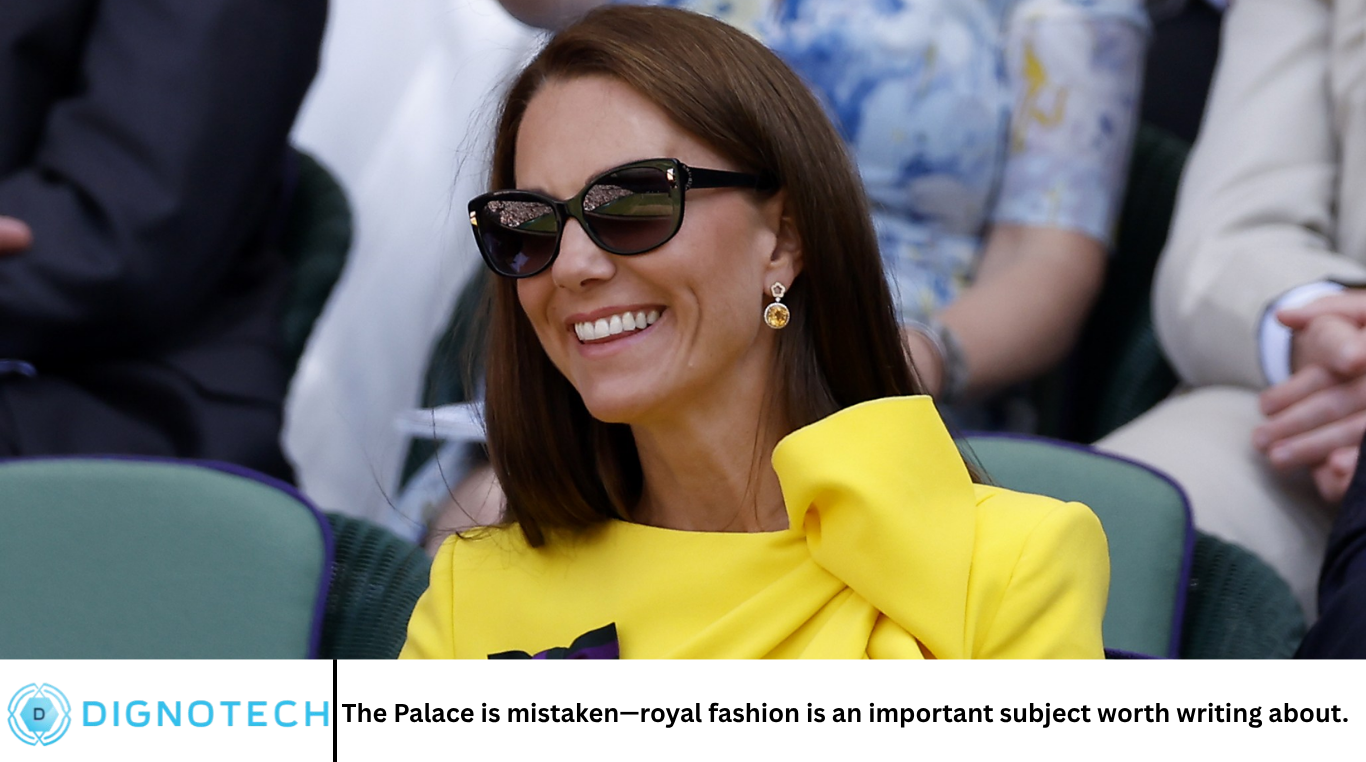The Palace is mistaken—royal fashion is an important subject worth writing about.

Royal fashion is often dismissed as mere opulence or superficiality, but such a perspective overlooks its profound significance. Far from being trivial, royal attire serves as a powerful tool for diplomacy, cultural expression, and societal influence. From Queen Victoria’s white wedding gown to Princess Diana’s bold fashion choices, royal fashion has shaped public perception and influenced global trends. In this article, we delve into why royal fashion is a subject worthy of serious consideration.
More Read:How to Wear Gold in Midlife Without Looking Over the Top
The Historical Significance of Royal Fashion
Symbolism of Power and Status
Throughout history, monarchs have used clothing to signify their authority and distinguish themselves from their subjects. Louis XIV of France, for instance, established sumptuary laws that dictated the types of fabrics and colors that could be worn by different social classes, thereby reinforcing the hierarchy of the ancien régime. Similarly, Queen Elizabeth I utilized elaborate gowns adorned with symbols of the Tudor dynasty to project an image of divine right and unassailable power
Cultural Identity and National Pride
Royal fashion often incorporates elements that reflect a nation’s heritage and cultural identity. Queen Elizabeth II, for example, wore garments featuring the national flowers of the countries she visited, such as the mayflower during her 1959 trip to Canada and the tree peony during her 1986 visit to China, as a gesture of goodwill and respect . These sartorial choices not only flattered her hosts but also showcased the United Kingdom’s appreciation for diverse cultures.
The Diplomatic Role of Royal Fashion
Soft Power and International Relations
Royal attire has long been a subtle yet effective form of diplomacy. The Queen’s wardrobe was meticulously planned to convey messages of solidarity and respect during state visits. For instance, her choice to wear green ensembles during her 2011 visit to Ireland was seen as a symbolic gesture acknowledging the nation’s history and fostering goodwill . Such sartorial decisions play a crucial role in fostering international relations and soft power
Influence on Fashion Trends
Members of royal families often set fashion trends that resonate globally. Princess Diana’s evolving style, from her wedding dress to her more casual, humanitarian-focused attire, influenced fashion and public perceptions of royalty. Similarly, the “Kate Middleton effect” refers to the surge in sales of items worn by Catherine, Princess of Wales, underscoring the commercial impact of royal fashion
The Intersection of Royal Fashion and Media
Shaping Public Perception
The media plays a pivotal role in amplifying the influence of royal fashion. Photographs of royals at public events are scrutinized and analyzed, turning their attire into subjects of public discourse. This constant media attention not only elevates the status of designers but also shapes public perceptions of the monarchy and its relevance in contemporary society.
Social Media and the Democratization of Fashion
Platforms like Instagram have democratized fashion commentary, allowing individuals worldwide to engage with and critique royal fashion. This shift has led to a more inclusive conversation about style, where diverse voices can discuss and influence fashion trends, including those set by royals.
The Economic Impact of Royal Fashion
Boosting the Fashion Industry
The fashion choices of royals can have significant economic implications. For example, Catherine, Princess of Wales’s endorsement of British brands has been credited with boosting the British fashion industry by up to £1 billion within a year . Such endorsements can lead to increased sales and global recognition for designers and brands
Supporting Local Economies
Royals often wear garments that showcase traditional craftsmanship, supporting local artisans and industries. By choosing to wear locally made attire, they promote national pride and contribute to the preservation of cultural heritage
The Role of Royal Fashion in Modern Society
Reflecting Societal Values
Royal fashion serves as a mirror to societal values and norms. The choices made by royals regarding modesty, sustainability, and inclusivity can influence public attitudes and behaviors. For instance, Meghan Markle’s decision to wear sustainable fashion and support underrepresented designers has sparked conversations about ethical fashion practices
Challenging Traditional Norms
Modern royals are increasingly using fashion to challenge traditional norms and express individuality. Meghan Markle’s departure from royal protocols, including her fashion choices, has been both criticized and praised, highlighting the evolving role of royalty in contemporary society
Frequently Asked Question
Why is royal fashion considered important?
Royal fashion serves as a tool for diplomacy, reflects cultural identity, influences fashion trends, and has economic implications.
How has royal fashion influenced global trends?
Members of royal families often set fashion trends that resonate globally, influencing public perceptions and boosting the fashion industry.
What role does the media play in royal fashion?
The media amplifies the influence of royal fashion by scrutinizing and analyzing their attire, shaping public perceptions of the monarchy.
How does royal fashion support local economies?
By wearing garments that showcase traditional craftsmanship, royals promote national pride and contribute to the preservation of cultural heritage
Can royal fashion reflect societal values?
Yes, royal fashion choices can reflect societal values and norms, influencing public attitudes and behaviors
Conclusion
Royal fashion is far more than a display of wealth and status; it is a complex language that communicates power, identity, and values. By examining the sartorial choices of royals, we gain insight into the cultural, political, and social dynamics of their time. Far from being a frivolous subject, royal fashion offers a rich tapestry of history and meaning that warrants our attention and study.





